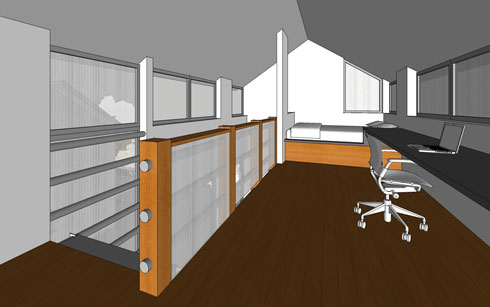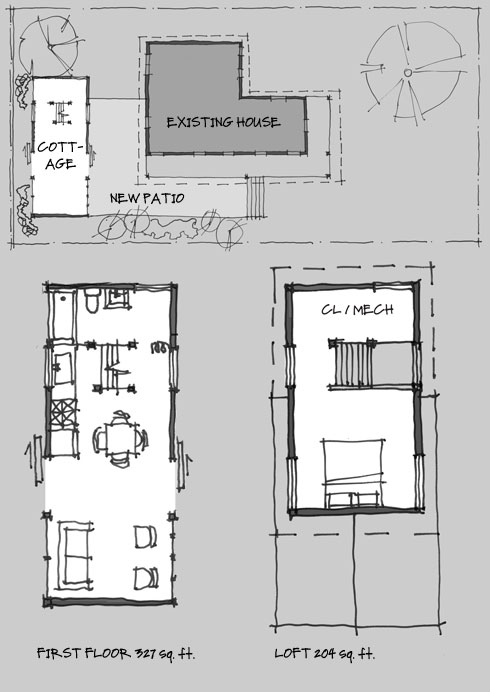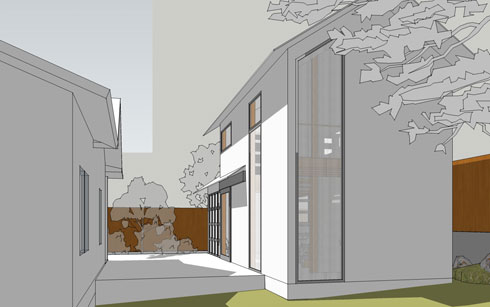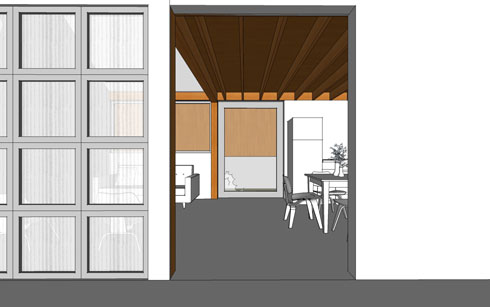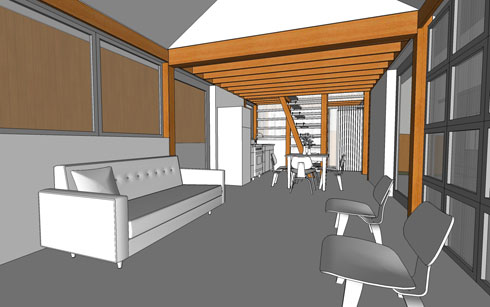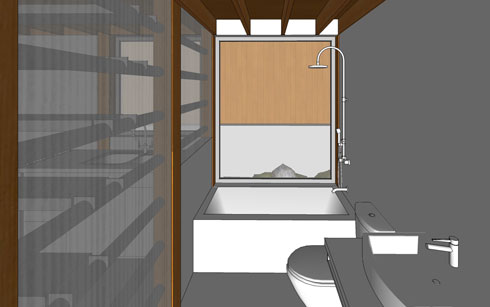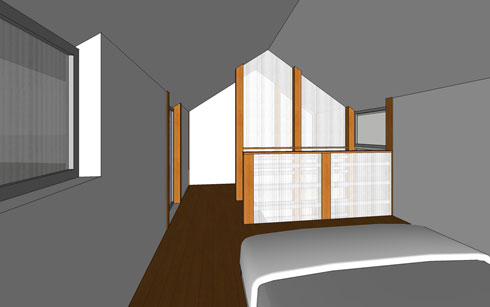How the Code currently allows a bigger house than any conceivable house plus DADU option
Will Seattle’s move to make more Backyard Cottages lead to a more sustainable city or just amplify environmental impacts?
You might think that more DADUs would lead to more environmental impacts—after all, construction takes fantastic amounts of resources (including capital). Being in the backyard, DADUs should increase of impervious area, lead to the loss of tree canopy, compound parking conflicts, and stretch City services even thinner, right? Isn’t the shadow of neighbor’s potential cottage going to forever keep me from growing the perfect heirloom tomato?
Last month, Marty Kaplan, under the aegis of the Queen Anne Community Council QACC, appealed a SEPA Determination of Non-Significance (DNS) with regard to changing certain characteristics of the Accessory Dwelling code.
Right off the bat, it is important to clarify that a DNS doesn’t state that there will be zero environmental impact, but as city wide code, it is impossible to evaluate impact on each individual lot without a real project associated with the lot. This is a ‘Non-Project Action.” While you may be affected by something built next door, until there is a project conceived there, the City has no method to evaluate its environmental impact. In fact, the original backyard cottage ordinance was given a DNS, an inconvenient fact not lost on the Kaplan, since he helped craft it while on the Planning Commission.
Today I finished testifying on behalf of the City on the Appeal, to establish a plain truth: Even if the City could evaluate the site by site impacts, they would show the City allows any single house to be much larger than any combination of house + DADU. Additional DADUs or larger DADUs are a reduction of environmental impact in comparison.
Furthermore, the number of people allowed to live there stays the same (8 people per lot), although more of them would be new renters much to QACC’s dismay. Energy code, tree protections, stormwater code, etc all stay the same under the new code. The impervious area actually goes down--by eliminating the parking requirement. How can there be significant environmental impacts, if the rest of the code is identical and the only difference is the number of families (not people allowed) per lot?
The SF zone is a zero sum environment—there is only so much buildable area, and if you choose to build a cottage, its lot coverage must deduct from the maximum size of the main house. And because it can’t be as tall, there is less available volume. It is a prima facia case, and in my mind, underlines the DNS.
As a proxy for all the land use regulations, we created a schematic diagram to illustrate the potential buildable envelop as a single family house, house with an accessory structure, and a house with a DADU. We repeated the diagram under the new ordinance. In all cases, the biggest volume was the solitary single family McMansion allowed by right today.
You only need to walk by a tear down house replacement and a backyard cottage to understand how the argument about which is better per QACC’s concern about neighborhood character is inverted. The QACC’s exhibits inadvertently made this exact point by showing an entire street of adorable bungalows replaced en masse with windowless 35’ blocks, completely obscuring whatever cottages in the backyard.
Which is where the tomatoes come in the picture. One witness testified that if the ordinance goes through, and cottages were built on all sides of his small lot (possible, but very, very improbable), there wouldn’t be any sunlight left for his tomatoes. He should be all for the new code—every new cottage built is a hedge against a speculative developer tearing down the old bungalow and putting up a maxed out single family house. And that which would really put his garden in the shade.




 The new Multifamily Code is scheduled to come up for a vote before Council on Monday. Â After years of process, hearings, and work shaping the outcomes, the new code will have some new attributes geared toward more flexibility in heights, parking, setbacks, and density. Â It disincentivizes the '6 pack' townhomes everyone dislikes and gives out bonuses for green building, designs that hid parking and give a better streetscape.
The new Multifamily Code is scheduled to come up for a vote before Council on Monday. Â After years of process, hearings, and work shaping the outcomes, the new code will have some new attributes geared toward more flexibility in heights, parking, setbacks, and density. Â It disincentivizes the '6 pack' townhomes everyone dislikes and gives out bonuses for green building, designs that hid parking and give a better streetscape.

 We've seen an unexpected level of interest in backyard cottages in the 2 months since the new ordinance has been in effect. Perhaps the most interesting thing about the projects is the diversity of needs for each one...
We have a young couple with a small house on a large lot that would like an outbuilding with a workshop and guestroom. We have a couple planning to build and occupy a cottage in their backyard in order to open up their home for their children and grandchildren to live in. We have a third couple who have separated but are committed to raising their children together. They currently live in the same house and believe that adding a backyard cottage to the property will maintain the proximity they need to raise their children together while providing them the space they need as individuals.
We've seen an unexpected level of interest in backyard cottages in the 2 months since the new ordinance has been in effect. Perhaps the most interesting thing about the projects is the diversity of needs for each one...
We have a young couple with a small house on a large lot that would like an outbuilding with a workshop and guestroom. We have a couple planning to build and occupy a cottage in their backyard in order to open up their home for their children and grandchildren to live in. We have a third couple who have separated but are committed to raising their children together. They currently live in the same house and believe that adding a backyard cottage to the property will maintain the proximity they need to raise their children together while providing them the space they need as individuals. We've completed the first round of design on our CAST architecture case study backyard cottage.
We've completed the first round of design on our CAST architecture case study backyard cottage.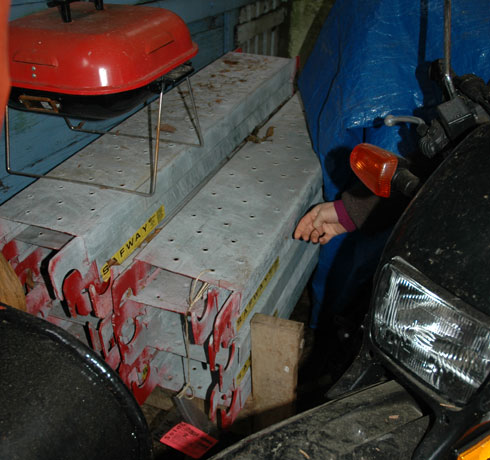
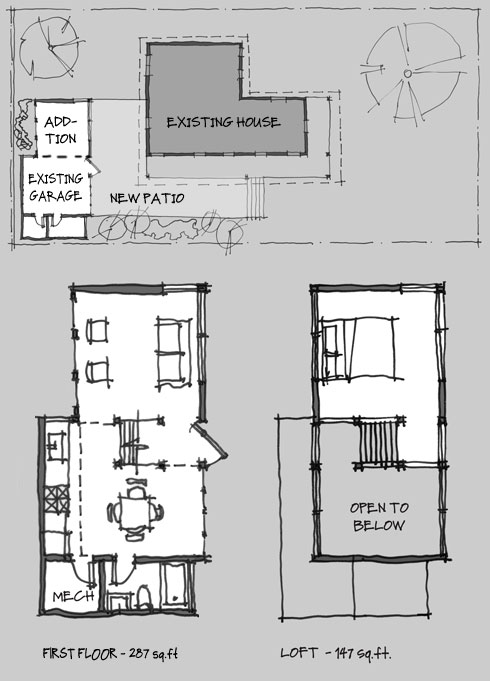



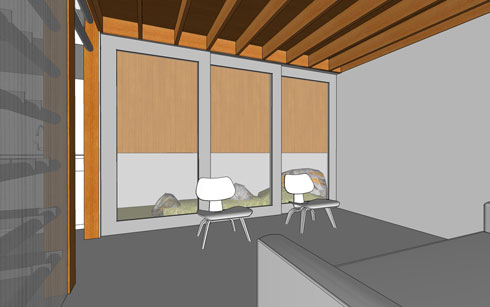
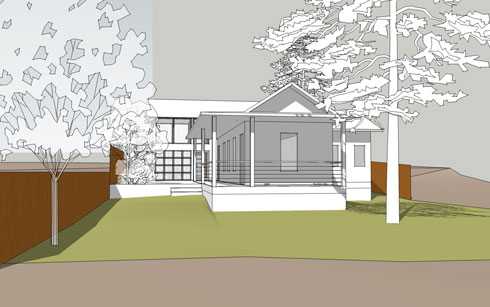
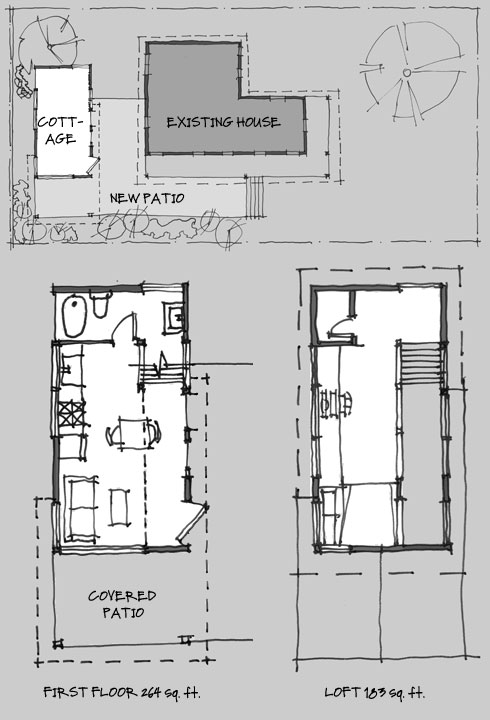
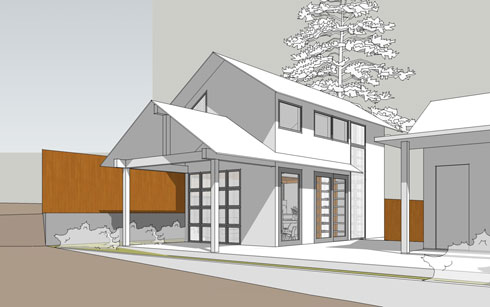 View from the SE
View from the SE
